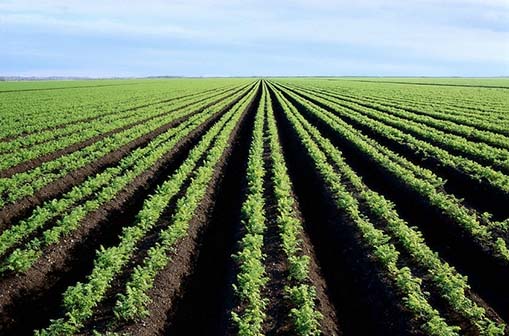Biosolids Application and Polyfluoroalkyl (PFAS)
By: Kevin Bonney
PFAS are a large group of chemicals used for decades in some industrial, commercial, and domestic settings and are found worldwide. Typical materials or processes that use or contain PFAS include firefighting foam, chrome plating, cookware coatings, waterproofing on clothing and carpet, and even food wrappers. Some PFAS, including Perflurooctanesulfonic acid (PFOS), which is commonly found in biosolids, have been phased out of production in the United States and are no longer approved for use. Even though they have not been used for years, their legacy remains.
Wastewater Treatment Plants (WWTPs) do not generate PFAS chemicals, though they may receive discharges from certain industrial or commercial sources who have used PFAS. As a result, PFAS may be found in treated wastewater and biosolids. Some of those PFAS are known to travel through water, can linger in the environment, and have the potential to impact the soil, water, and crops. PFAS has been found to build up in the tissue of fish and deer in Michigan and in some areas and in some areas led to consumption advisories. Studies are underway to determine the impact of PFAS on animals, animal products, and crops.
Currently, the United States Environmental Protection Agency is conducting a risk-based evaluation of PFAS in biosolids. Until that is completed, Michigan’s Department of environment, Great lakes, and Energy (EGLE), Water Resources Division (Which regulates the land application of biosolids) have developed sources of PFAS entering a WWTP and preventing industrially impacted biosolids from being land applied. As a result of these efforts, several WWTPs have already seen significant reductions in PFAS concentrations in their biosolids.
Should you have additional questions concerning Michigan’s strategy to monitor and reduce sources of PFAS in biosolids, please do not hesitate to reach out to one of the EGLE Biosolids staff or the Michigan Department of Agriculture and Rural Development (MDARD) contacts. More information about the work being done on PFAS in biosolids in Michigan can be obtained by visiting the Landowner/Farmer PFAS Land Application Workgroup Web Page: https://www.michigan.gov/PFASLandApplication
BioTech has invested in testing equipment and follows strict EGLE guidelines.
Presently EGLE’s threshold concentration for PFOS in biosolids to be considered industrially impacted is 150 ppb.

